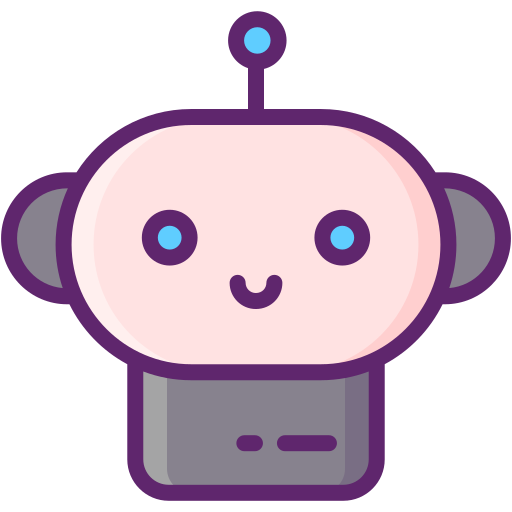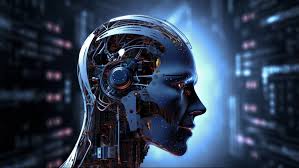Artificial Intelligence (AI) is evolving beyond basic automation — and at the forefront of this transformation are AI agents. Whether you’re building intelligent assistants, automating workflows, or scaling decision-making, AI agents are changing how we interact with software.
🧠 What Are AI Agents?
AI agents are autonomous systems that perceive their environment, reason about it, and act to achieve goals — all while learning and adapting over time. Unlike traditional software that runs fixed rules, AI agents are goal-driven, flexible, and can work independently.
Key Characteristics:
- Autonomy: Operate without constant human supervision.
- Perception: Understand inputs like text, voice, images, or data.
- Reasoning: Make decisions based on context.
- Learning: Improve performance over time using feedback.
🏆 Best AI Agent Tools & Frameworks (2025)
| Tool/Framework | Description | Best For | Language |
|---|---|---|---|
| LangChain | Framework for building LLM-powered agents with memory, tools, and planning | Conversational agents, chatbots, workflows | Python, JavaScript |
| AutoGen (by Microsoft) | Multi-agent framework enabling collaborative AI agents powered by LLMs | Complex multi-agent workflows, research | Python |
| CrewAI | Lightweight agent framework focused on assigning roles and tasks to agents (crews) | Task orchestration with LLMs | Python |
| AutoGPT | Autonomous agent that chains LLMs to perform tasks with minimal input | Long-term task automation | Python |
| BabyAGI | Task-driven agent using LLMs and vector databases to learn and iterate | Research agents, autonomous ideation | Python |
| OpenAgents (by OpenAI) | Toolkit for integrating AI agents into apps with tool-use, memory, and API calling | Building smart AI apps and assistants | JavaScript, Python |
| ReAct (Reason + Act pattern) | Not a tool, but a prompt-engineering strategy to reason and act | Integration in LLM-based reasoning agents | N/A |
| LangGraph | Event-driven graph-based system built on LangChain | Complex workflows and agent state management | Python |
| Haystack (deepset) | NLP framework to build Q&A systems and knowledge agents | Enterprise search agents, RAG pipelines | Python |
| Hugging Face Transformers + Accelerate | LLM deployment toolkit for agent-like applications | Fine-tuning, inference for agent backends | Python |
🧠 Features to Look for in an AI Agent Tool
| Feature | Why It Matters |
|---|---|
| Tool Use / Plugin Support | Allows agents to use APIs, web browsers, or databases |
| Memory / State Management | Enables context-aware and long-running sessions |
| Planning & Reasoning | Lets agents break down goals into subtasks |
| Multi-Agent Coordination | Allows multiple agents to collaborate or debate |
| Vector Store Integration | For semantic search, memory, and contextual retrieval (RAG) |
| Human-in-the-Loop | Offers checkpoints or approval steps when needed |
🔧 Tools That Complement AI Agent Frameworks
| Tool | Purpose |
|---|---|
| Pinecone, Weaviate, ChromaDB | Vector databases for memory and search |
| LLM APIs (OpenAI, Anthropic, Cohere) | Power your agents with language models |
| FastAPI / Flask | Hosting agent backends as APIs |
| Streamlit / Gradio | Building UI interfaces for agents |
| Docker + LangServe | Containerizing and deploying agents |
🔍 Use Case Matching
| Use Case | Best Tool(s) |
|---|---|
| Conversational AI with memory | LangChain, AutoGen, OpenAgents |
| Autonomous task execution | AutoGPT, BabyAGI |
| Business workflow automation | CrewAI, LangGraph |
| Knowledge Q&A agents | Haystack, LangChain + RAG |
| Agent collaboration / research | AutoGen, CrewAI |
🛠️ Bonus Tools: Vector databases (Pinecone, ChromaDB), hosting (LangServe), UI builders (Streamlit, Gradio).
🌍 Real-World Applications of AI Agents by Industry
AI agents are being rapidly adopted across industries to automate workflows, enhance decision-making, and deliver better user experiences. Here’s a detailed breakdown of real-world AI agent applications by industry:
🏥 Healthcare
| Application | Description |
|---|---|
| Medical assistants | AI agents like Glass AI summarize patient data and assist in diagnosis. |
| Appointment schedulers | Chatbots automate scheduling and reminders. |
| Radiology analysis | AI agents scan X-rays, MRIs, and CT scans for anomalies. |
| Clinical decision support | LLM agents suggest treatments based on patient history and guidelines. |
Example: Nuance DAX Copilot (by Microsoft) helps doctors automate clinical note-taking.
💼 Finance & Banking
| Application | Description |
|---|---|
| Robo-advisors | AI agents manage investment portfolios (e.g., Wealthfront, Betterment). |
| Fraud detection | Detect suspicious transactions and alert security teams. |
| Customer support agents | 24/7 banking assistance via chat or voice. |
| Loan risk assessment | AI evaluates creditworthiness and automates underwriting. |
Example: JPMorgan’s COiN automates legal document analysis using AI agents.
🛍️ Retail & eCommerce
| Application | Description |
|---|---|
| Personal shopping assistants | Agents recommend products based on behavior and preferences. |
| Customer service bots | Handle returns, tracking, complaints with natural language. |
| Inventory management | Forecast demand, automate reordering. |
| Dynamic pricing | AI agents adjust prices based on competition and demand. |
Example: Sephora’s virtual assistant helps customers choose products via chat.
🏭 Manufacturing
| Application | Description |
|---|---|
| Predictive maintenance | AI agents monitor machinery to prevent downtime. |
| Supply chain optimization | Autonomous agents forecast delays and reroute logistics. |
| Quality control | Computer vision agents inspect defects in real-time. |
| Warehouse automation | AI-powered robots and agents manage inventory. |
Example: Siemens uses AI agents for intelligent factory floor automation.
🚗 Automotive
| Application | Description |
|---|---|
| Autonomous driving agents | Control acceleration, braking, navigation (Tesla Autopilot, Waymo). |
| Voice-activated assistants | Drivers interact with infotainment systems hands-free. |
| Predictive maintenance alerts | Agents detect wear-and-tear signs in real time. |
Example: Mercedes’ MBUX system uses AI to learn driver behavior and preferences.
🎓 Education
| Application | Description |
|---|---|
| Personal tutors | AI agents provide real-time feedback and learning paths (Khanmigo, Socratic). |
| Automated grading | Evaluate assignments and provide detailed feedback. |
| Student engagement bots | Keep students motivated with reminders, summaries. |
Example: Duolingo uses AI agents to personalize language learning journeys.
🏢 Enterprise / Business Ops
| Application | Description |
|---|---|
| Meeting summarizers | Agents like Fireflies, Otter summarize calls automatically. |
| Email assistants | Draft, prioritize, and auto-respond to emails. |
| Project managers | Agents track deadlines, assign tasks, and generate reports. |
Example: Microsoft Copilot integrates AI agents into Office 365 (Word, Excel, Teams).
📰 Media & Entertainment
| Application | Description |
|---|---|
| Scriptwriting agents | Generate stories, ads, or show concepts. |
| Content personalization | AI curates user-specific video/music feeds. |
| Virtual influencers | AI agents manage personas on social media. |
Example: Netflix uses AI to tailor artwork and content suggestions using viewing history.
🔐 Cybersecurity
| Application | Description |
|---|---|
| Threat detection agents | Monitor systems 24/7 and flag anomalies. |
| Incident response | Autonomous agents isolate breaches and trigger response protocols. |
| Security bots | Answer employee security queries in real time. |
Example: Darktrace uses AI agents to detect and neutralize cyber threats autonomously.
🔄 AI Agents vs. Traditional Software: A Head-to-Head Comparison
| Feature | AI Agents | Traditional Software |
|---|---|---|
| Autonomy | High – makes decisions | Low – needs explicit commands |
| Learning | Can learn and adapt | Static unless updated |
| Input Types | Understands unstructured data (text, voice) | Handles structured data only |
| Behavior | Dynamic, goal-driven | Rule-based, fixed logic |
| Use Cases | Personalized experiences, automation, prediction | Data entry, processing, calculations |
Here’s a clear and detailed comparison between AI Agents and Traditional Software, highlighting how they differ in architecture, behavior, flexibility, and use cases.
🧠 AI Agents vs. Traditional Software: Key Differences
| Feature | AI Agents | Traditional Software |
|---|---|---|
| Autonomy | Operate independently, make decisions | Follow fixed instructions, limited autonomy |
| Learning Ability | Learn from data and experiences | Do not learn; static unless reprogrammed |
| Adaptability | Dynamic, can adjust behavior in new environments | Rigid; needs manual updates for new conditions |
| Input Type | Handles unstructured inputs (text, images, voice) | Mostly structured, predefined inputs |
| Behavior | Goal-driven and context-aware | Rule-based and predictable |
| Programming Model | Uses AI/ML, NLP, reinforcement learning | Built with deterministic code (if-else, loops, etc.) |
| Environment Interaction | Can sense, reason, and act within changing environments | Needs explicit inputs and does not evolve behavior |
| Complex Task Handling | Can break down goals, plan, and execute sub-tasks | Executes predefined tasks only |
| Examples | ChatGPT, AutoGPT, Tesla Autopilot, Alexa | Microsoft Excel, Notepad, legacy ERP systems |
🧩 Real-World Example: Email Assistant
| Aspect | AI Agent | Traditional Software |
|---|---|---|
| Email Drafting | Understands tone, context, and writes drafts using AI | User must type everything manually |
| Sorting Emails | Classifies emails by importance using ML | Basic filters or rules |
| Scheduling Meetings | Interprets intent from email and books a time | Relies on user input and calendar syncing manually |
| Learning | Improves suggestions over time | No self-improvement; static functions |
🎯 Use Cases: Which One is Better?
| Use Case | Prefer AI Agent | Prefer Traditional Software |
|---|---|---|
| Personal assistant/chatbot | ✅ Yes | ❌ No |
| Static data entry | ❌ Overkill | ✅ Yes |
| Real-time decision-making | ✅ Yes | ❌ Limited |
| Predictable, repetitive tasks | ❌ Inefficient | ✅ Ideal |
| Creative writing or ideation | ✅ Strong | ❌ Poor |
| Banking transaction systems | ❌ Less predictable | ✅ Safe and stable |
🧠 Summary
| Category | Winner |
|---|---|
| Flexibility | AI Agent |
| Reliability in fixed tasks | Traditional Software |
| Learning & Personalization | AI Agent |
| Predictability & Control | Traditional Software |
| Complex, goal-based automation | AI Agent |
🧩 When to Use AI Agents vs. Traditional Software
✅ Use AI Agents When:
- Tasks require adaptability
- Input is unpredictable (language, voice)
- Goal-based automation is needed
- Learning from feedback is important
✅ Use Traditional Software When:
- Tasks are simple and repetitive
- Outcomes need to be 100% predictable
- Real-time performance is critical with minimal risk
🚀 Final Thoughts
AI agents are not just a trend—they are redefining how software behaves. With their ability to reason, learn, and act independently, they are ideal for solving complex, evolving problems across industries. However, traditional software still plays a vital role in tasks that require precision and stability.
Whether you’re a developer, entrepreneur, or enterprise decision-maker, understanding the landscape of AI agents will prepare you for the future of software development and automation.
🔎 Frequently Asked Questions
Q1. Are AI agents better than traditional software?
Not always. They’re better for dynamic, learning-based tasks. Traditional software is more reliable for static, rule-based operations.
Q2. What are some popular AI agents today?
ChatGPT, Tesla Autopilot, Google’s Bard, and Alexa are all AI agents with real-world applications.
Q3. Can I build my own AI agent?
Yes! Tools like LangChain, CrewAI, and AutoGen make it easier than ever to create your own autonomous agent.

